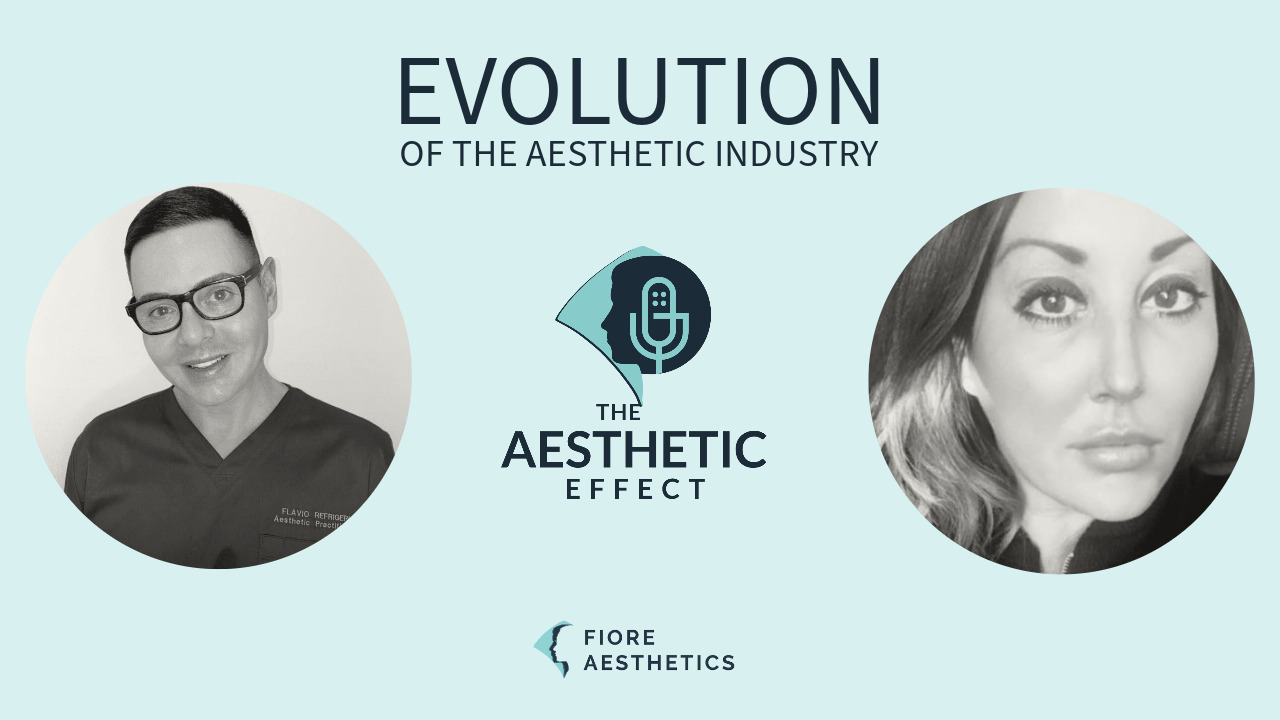The aesthetic industry has undergone significant changes over the past decade, evolving in response to technological advancements, social media influence, and changing consumer expectations. As part of the latest Aesthetic Effect podcast, expert practitioners Flavio Refrigeri and Heidi Dollimore explore the positive shifts experienced within this dynamic field while addressing some of the challenges these changes have brought about.
A Look Back: The Origins of the Aesthetic Industry
In the early days of the aesthetic industry, options for treatment were relatively limited. The primary treatments available consisted of toxin therapy and basic dermal fillers. At that time, the key focus was on addressing visible signs of ageing, with procedures aimed at reducing wrinkles and restoring volume. Practitioners often relied on word-of-mouth referrals and traditional advertising, such as magazine or local paper ads, to attract clients.
As the industry was still in its nascent stages, educational resources and professional training options were less prevalent. This created a scenario where specialization and access to a broader range of treatments were somewhat confined to a few well-versed professionals.
The Impact of Social Media
The advent of social media platforms like Instagram and the subsequent explosion of user-generated content dramatically reshaped the aesthetic industry. Suddenly, practitioners had a tool that allowed them to share before-and-after photos and videos with a global audience, while also providing an educational insight into the procedures offered. Social media’s real-time interaction capabilities enabled professionals to connect with potential clients and industry peers effortlessly. It became a powerful marketing vehicle to introduce new treatments and products instantaneously.
However, with exposure came certain negative aspects. The influence of celebrities and the trend towards glamorization of certain features led to a rise in unrealistic expectations among the clientele. This trend has put pressure on practitioners to manage expectations more carefully during consultations, emphasizing the importance of suitability for particular treatments, given the individual’s anatomy.
Treatment Innovations & Shift in Client Demographics
The past decade saw the introduction of advanced treatments like skin boosters, thread lifts, and the increased popularity of hyaluronic acid fillers over collagen. These innovations provided more comprehensive options for clients, offering solutions for a variety of skin concerns, from loss of volume to fine lines and dehydration.
Notably, client demographics also shifted, with younger age groups seeking aesthetic treatments much earlier than previous generations. This posed a challenge for practitioners, who now have to juggle the ethical considerations of treating younger clients while adhering to legal age limits and ensuring that individuals are ready to make informed decisions about their aesthetic journey.
The Power of Consultation
Consultations have always been a fundamental aspect of the aesthetic industry, serving as the pivotal moment for understanding a client’s desires, setting realistic expectations, and ensuring treatment suitability. With a culture increasingly saturated with images of ‘ideal’ beauty types, consultations have taken on a new depth, often touching upon psychological factors that drive clients towards aesthetic procedures.
In response, professionals in this field have developed strategies to identify when a ‘no’ is necessary, safeguarding both the client’s well-being and their own practice’s integrity. The ability to guide clients towards treatments that align with their specific anatomy rather than popular trends has become a crucial skill for modern practitioners.
Social Media: An Educational Platform & Source of Pressure
While social media has positively impacted the aesthetic industry by providing an educational platform for immense knowledge sharing, it also comes with downsides. The expectation to attain celebrity-like perfection has grown, placing intense pressure on individuals to conform to idealized beauty standards, often distorting their self-image and self-esteem. Practitioners now play a vital role in the dissemination of responsible, accurate information to counteract the potentially damaging effects of this trend.
For professionals, it’s essential to navigate the balance between leveraging social media’s vast reach and maintaining an honest dialogue about what aesthetic treatments can realistically achieve. This ensures that clients have a clear understanding and maintain healthy perceptions of self and the role of aesthetics in their lives.
Celebrating the Positive, Addressing the Challenges
The aesthetic industry is dynamic, fueled by continuous innovation and the desire to help clients feel their best. Positive client stories showcase the transformative power of treatments, affirming the value practitioners bring to individuals’ lives. While there are challenges to address, such as managing changing client demographics and the pressure induced by social media, the industry remains a place of positive change for those who approach it with informed minds and realistic expectations.











